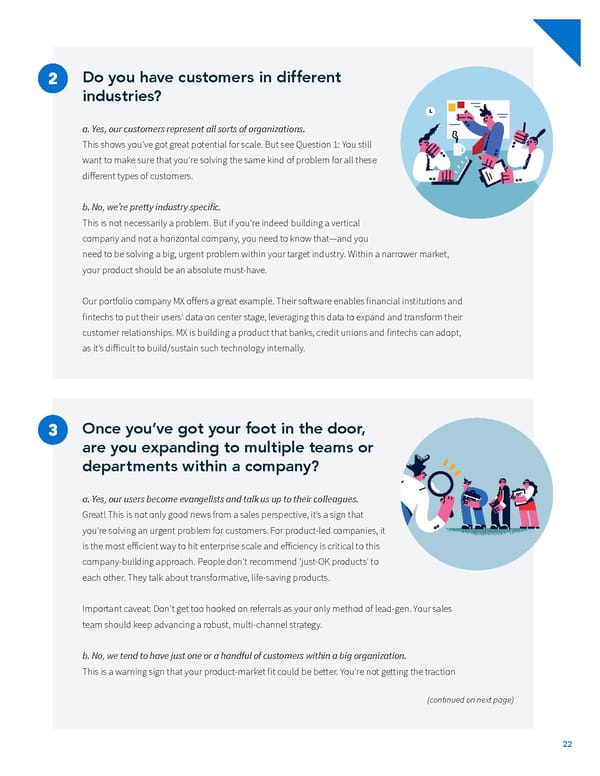Do you have customers in different industries? a. Yes, our customers represent all sorts of organizations. This shows you’ve got great potential for scale. But see Question 1: You still want to make sure that you’re solving the same kind of problem for all these different types of customers. b. No, we’re pretty industry speciifc. This is not necessarily a problem. But if you’re indeed building a vertical company and not a horizontal company, you need to know that—and you need to be solving a big, urgent problem within your target industry. Within a narrower market, your product should be an absolute must-have. Our portfolio company MX offers a great example. Their sotfware enables ifnancial institutions and ifntechs to put their users’ data on center stage, leveraging this data to expand and transform their customer relationships. MX is building a product that banks, credit unions and ifntechs can adopt, as it’s difficult to build/sustain such technology internally. Once you’ve got your foot in the door, are you expanding to multiple teams or departments within a company? a. Yes, our users become evangelists and talk us up to their colleagues. Great! This is not only good news from a sales perspective, it’s a sign that you’re solving an urgent problem for customers. For product-led companies, it is the most efficient way to hit enterprise scale and efficiency is critical to this company-building approach. People don’t recommend ‘just-OK products’ to each other. They talk about transformative, life-saving products. Important caveat: Don’t get too hooked on referrals as your only method of lead-gen. Your sales team should keep advancing a robust, multi-channel strategy. b. No, we tend to have just one or a handful of customers within a big organization. This is a warning sign that your product-market ift could be better. You’re not getting the traction (continued on next page) 22
 Guide to Breaking into the Enterprise Market Page 21 Page 23
Guide to Breaking into the Enterprise Market Page 21 Page 23